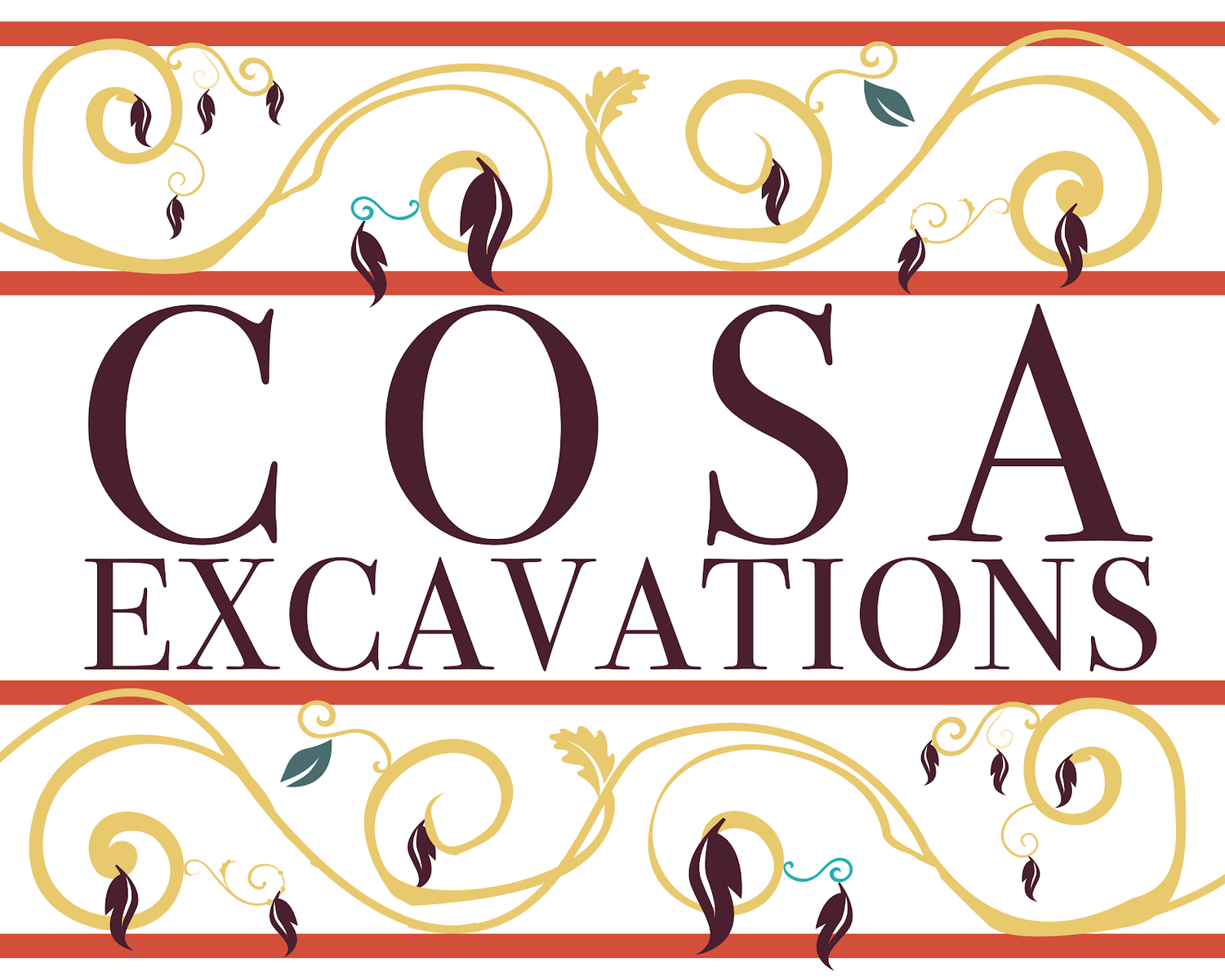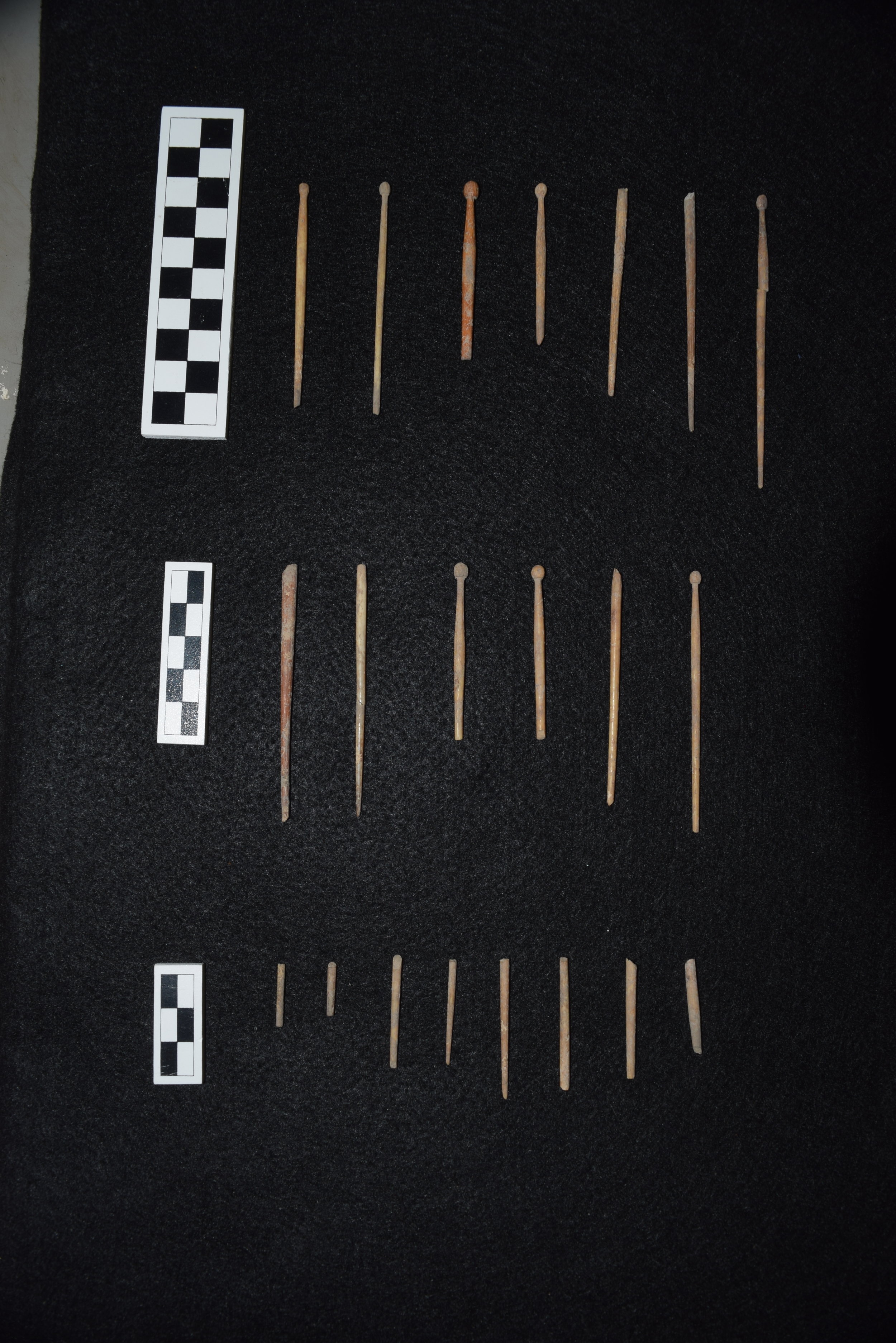Two incomplete but still standing pilae were found in the western portion of Laconicum 4 (also seen at left). These pilae - short towers of square terracotta bricks (bessales) stacked atop one another that acted as supports in the underfloor heating system of roman baths - appear to be part of the caldarium (the hot room of the bath complex), which is just to the west of this newly excavated room.
In 2017, excavations continued in the areas of the heated rooms (caldarium, laconicum, and tepidarium). One of these rooms, likely a tepidarium, or warm room, given the lack of tubuli (wall heating) found in situ and within the collapse, was revealed in the 2017 season in the trench labeled Laconicum 4.
Melissa and Nora work to finish paperwork on the final day of the season.
While the area pictured above was mostly exposed last season (2016), during the pre-season of Cosa's 2017 expedition, excavation continued in this area to answer some remaining questions. It was in this area that the bone hairpins and glass vessels were found (at right). While the large fragment of the labrum (a large water basin probably originally used in the bathhouse proper) was an enigmatic feature that we hoped to gain more information about, no other fragments appeared in this season's excavation.
in this western portion of the bath complex, several bone hairpins were found in a concentrated area. alongside these pins, several glass vessels of varying preservation were uncovered. perhaps this area of the bath functioned as a toilette.
Elevated Cisterns 3, the 2017 excavations to the north of the area in which the labrum was found, exposed the extent of a room enclosed by stone and mortar walls that were originally plastered. Evidence of burning and disintegrated plaster chunks within the archaeological strata indicate a period of destruction. and during the course of excavation a drain (see video below) was found leading to what we believe to be another cistern that was used to collect water, perhaps greywater coming from the bath building.
Video of interior of the drain found in Elevated Cisterns 3 leading down into what we believe is another cistern.
In the trench, Elevated Cisterns 3, north of the trench in which the large labrum fragment was found, a sculpted head was uncovered. Made of tufo (tuff), this sculptured piece preserved remnants of the paint that would have decorated this artifact. Unfortunately, the head was found in the upper strata of an expansive accumulation layer and therefore its original context is unclear.
Photomodel created by Matthew Brennan and originally posted on his Skechfab account. (https://sketchfab.com/models/96ef79565d3d40c1925faad4878cd400)
At the opposite end of the bath from where the head, bone hairpins, and labrum were found, the eastern side of the bath was explored in order to discover more about the interior layout of the building. The excavation of this area was made supremely difficult by large fragments of collapsed walls and vaults, but it became clear that within this area another division of space occurs, as a wall perpendicular to the terminal wall (explored in 2013 and 2014) was uncovered.
The area of the Machine Room, in the southwestern area of the bath, that was opened and explored in 2016 was reopened and expanded during the 2017 season. Questions still remain in this area that will be explored in the future, but some interesting architectural features were uncovered, including a cocciopesto (ancient water-proofing material) covered bench, within which a triangular drainage feature was found (see below).
The triangular drainage feature within the cocciopesto covered bench, whose western end was found in 2016, was further excavated in 2017. The drain itself is lined with terracotta tiles and a herringbone (opus spicatum) lower surface. Within the drain, several nails were found, along with a bronze coin and a carved bone.
Bronze coin found in the drain of the Machine Room (pictured left). Carved bone found in the drain of the Machine Room (pictured right).
Matthew Brennan catches his drone returning from another successful flight over the baths of Cosa. With the images captured `during these flights supplemented by pictures taken by digital cameras on the ground, we are able to create orthographic images of individual trenches and the entire bath complex.
The photo-model above is a composite of the orthographic image created from images taken at the close of the 2016 season overlaid with orthographic images of the 2017 trenches.























